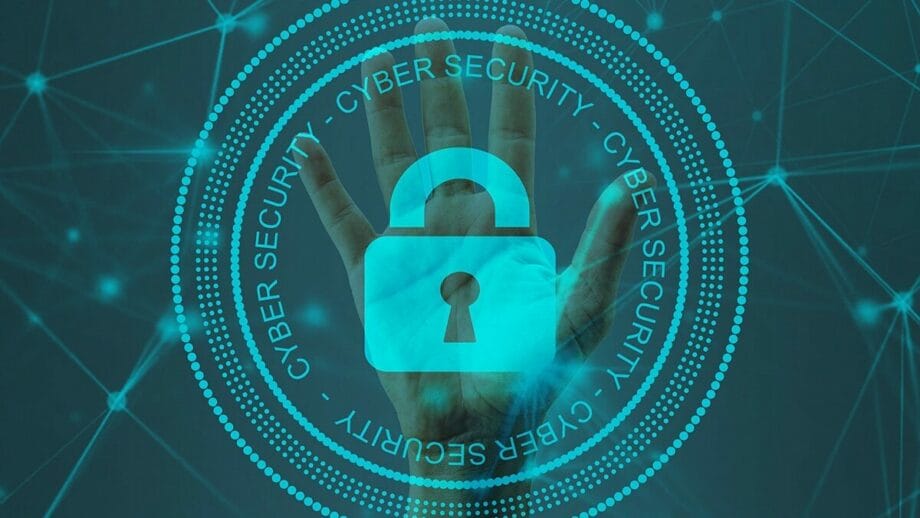Cyberattacks are becoming common every dawn. This means that individuals and organizations should take adequate preventive measures or risk paying dearly. Advancing technology has resulted in the development of sophisticated cyber-attack mechanisms.
For instance, the increasing adoption of artificial intelligence will transform both attack and defensive abilities in the cybersecurity landscape. Similarly, cybersecurity professionals can now leverage advanced tools to predict hacker techniques. That said, below are a few emerging cybersecurity trends to watch out for.
1. Cybersecurity Skill Crunch

There is a high demand for cybersecurity pros globally. The ripple effect of such increasing demand is the shortage of qualified professionals. Apart from soaring demand, many other factors are behind the cybersecurity skills crunch. The first is the global increase in cyber threats. There are more cyberattacks targeting different individuals and organizations than ever before.
As such, businesses and organizations have to find experts who can understand, analyze, and respond promptly to these evolving threats. Advancing technologies also cause a cybersecurity skills crunch. As technology evolves, so do the attack surfaces. For instance, cloud computing introduced a new attack surface, which is the cloud. Unfortunately, there are very few cybersecurity professionals who can handle such rapidly evolving cyberattacks.
Thirdly, the cybersecurity field is full of complex regulatory guidelines. Meeting cybersecurity standards and regulations is tasking for most individuals and businesses. Businesses can only do so by employing professionals well-versed in these guidelines.
The cybersecurity skills crunch also results directly from a high staff turnover. As mentioned, the cybersecurity industry evolves rapidly. There’s also a high demand for experts, resulting in job burnout and significantly high turnover rates. This exacerbates staff shortage, as companies struggle to retain professionals.
While the shortage of professionals presents a significant problem, organizations should implement ongoing efforts to attract, retain, and train more skilled professionals. Regular cybersecurity risk assessment is also important.
2. Automotive Hacking on the Rise

Automotive hacking is the second emerging trend in the cybersecurity industry worth mentioning. Unlike before, modern vehicles feature advanced technologies, creating an attack surface for automotive hacking. The prevalence of autonomous features on cars expands the available attack surfaces, creating new challenges for automotive manufacturers and the cybersecurity industry.
For starters, modern vehicles come equipped with interconnected systems and electronic control units that use modern communication networks. Unfortunately, most advanced technological features like in-car entertainment units make modern vehicles susceptible to cyberattacks. Hackers can exploit such vulnerabilities for various purposes. For instance, they can control crucial car functions remotely or enable unauthorized access.
Like most recent technological innovations, automotive hackers can target various touch points. They can exploit vulnerabilities in the vehicle’s infotainment system or telematics units to their advantage. The lack of reliable security mechanisms and vulnerabilities in automotive software and firmware exposes these vehicles to exploitation.
Unfortunately, there were no standard frameworks for mitigating automotive hacking. As such, addressing the current increase in automotive hacking requires a multi-faceted approach. Automotive manufacturers have now recognized the importance of adopting various cybersecurity preventive practices.
Regulations like the ISO/SAE21434 help mitigate these cyber issues. Cybersecurity experts should also embrace defensive techniques like the “MITRE ATT&CK framework”. Similarly, regulatory bodies, industry leaders, and cybersecurity professionals should combine efforts to seal possible loopholes throughout the vehicle’s development stages.
3. Next-Level Phishing Attacks

Next-level phishing attacks are sophisticated phishing attempts. Here, hackers use advanced techniques to trick individuals into divulging sensitive information or completing compromising actions. Hackers research extensively and create personalized content that can easily pass regular users.
Spear phishing is undoubtedly the most common form of next-level phishing attack. This form involves targeted attacks directed at individuals or organizations. Attackers collect extensive information about their targets on social media, company websites, and public platforms, then use this information to craft very personalized and easily believable emails. The emails appear very legitimate, and the target can’t differentiate them from fake emails.
Business email compromise, or BEC, is the other common next-level phishing attack. Here, hackers exploit business email accounts for fraud. In such a situation, the attacker impersonates high-ranking executives to send email requests for sensitive information or initiate wire transfers within an organization.
Voice and SMS phishing are also on the rise. Like other modern phishing methods, these attacks go beyond the traditional email-based phishing strategies. Vishing or voice phishing involves the use of phone calls and other voice communication channels to deceive individuals. Attackers use spoofed caller IDs to impersonate trusted individuals into submitting sensitive information.
SMS phishing, or Smishing, is also becoming popular. This trick uses text messages to launch phishing attacks. Here, hackers send deceptive texts with malicious links that capture sensitive information upon clicking. These messages often appear as urgent alerts, which explains why most people fall for them.
Unfortunately, mitigating next-level phishing attacks can prove challenging. Individuals and organizations can improve their cyber safety by conducting regular awareness training to reduce human error and implementing multi-factor authorization and other advanced email security solutions.
4. Mobile is the NewTarget

There’s a significant adoption of mobile devices in various sectors. This makes them a new target for malicious persons. Unlike before, laptops and desktops aren’t a priority for cybersecurity anymore. They’ve turned to smartphones and tablets as they are widely used.
One of the many things making mobile the new target is its pervasiveness. With nearly everyone owning a smartphone, hackers looking for maximum impact target these devices. That aside, mobile devices store plenty of sensitive personal and business information, including emails, addresses, financial data, and login details. These details can be exploited for financial fraud or identity theft.
The presence of mobile banking and payment apps on smartphones also makes them a priority target. Nearly everyone nowadays receives and makes payments from their smartphones. Financial fraudsters know this and are actively looking for ways to compromise your mobile devices. Once they exploit these apps, they access your financial data and other personal information that’s overly beneficial to them.
There’s also the BYOD policy, where organizations allow employees to use their devices for work-related tasks. Using personal devices at work means logging into a company network and transferring sensitive information using your device.
5. Cybersecurity in the Boardroom

Cybersecurity has also shifted to a boardroom affair. They are no longer reserved for the IT teams only. Company and organization boards have acknowledged the far-reaching consequences of cybersecurity threats. Financial losses, reputation damage, and the resulting legal implications cannot be ignored. As such, cybersecurity concerns should be part of every business’s strategic risks.
The board is more concerned about the financial impact of cybersecurity incidents. The costs that come with data breaches, remediation, and legal actions significantly affect the company’s bottom line.
Government agencies and relevant regulatory bodies globally have also increasingly introduced cybersecurity requirements and regulations for organizations. Boards and company heads should ensure compliance with these regulations or face legal and financial penalties should they fail.
Company boards have, over time, recognized the importance of conducting regular cybersecurity training to improve awareness. This includes measures to ensure all employees receive appropriate training to help them identify and respond promptly to cyber threats. Generally, there’s more focus on cybersecurity in the boardrooms.
6. Cloud Vulnerabilities

Companies should be wary of cloud computing challenges as they increasingly embrace this new technology. The most common issues facing cloud computing are insecure APIs and interfaces. Poorly designed APIs and insecure interfaces expose vulnerabilities that allow unauthorized access, data breaches, and exploitation of cloud resources.
The shared responsibility model used by providers of cloud services is the other loophole. This means service providers are only responsible for the security of cloud infrastructure. On the other hand, clients are responsible for the security of uploaded data and applications. Inadequate security protocols or misconfiguration by users can expose serious vulnerabilities.
Cloud vulnerabilities also stem from identity and access management failures. As the name suggests, this refers to inadequate management of access controls and user identities. Granting excessive permissions or failing to revoke access for users who don’t need access anymore can result in data breaches. Other sources of cloud vulnerabilities include:
- Data breaches and inadequate encryption: Most cloud service providers use encryption mechanisms to protect stored and transit data. However, a lack of proper encryption or misconfigured encryption can expose sensitive information.
- Inadequate visibility monitoring: Limited visibility in cloud environments makes it difficult to detect vulnerabilities and cybersecurity incidents. Cloud computing users should employ sophisticated monitoring tools that continually track, detect, and respond to anomalies.
- Lack of compliance controls: Cloud users should ensure compliance with industry-specific regulations that guide cloud deployments.
- Complexity and dynamic changes: The cloud computing realm is very dynamic and undergoes rapid changes aimed at accommodating updates and new features. These complexities can result in cybersecurity lapses if not followed accordingly.
- Misconfiguration and poor security practices: Misconfigured cloud services, such as databases and network settings, are primary sources of vulnerabilities. Cloud monitoring users should configure their services properly and monitor continuously to avoid such cases.
Endnote

Individuals and organizations shouldn’t attack their cybersecurity measures to mitigate these trends. The evolution of cyberattacks and widening digital attack surfaces means organizations should enhance and streamline their cybersecurity architectures continually. Businesses should also be willing to spend more on asset protection and cybersecurity infrastructure updates to avoid the consequences of successful attacks.





